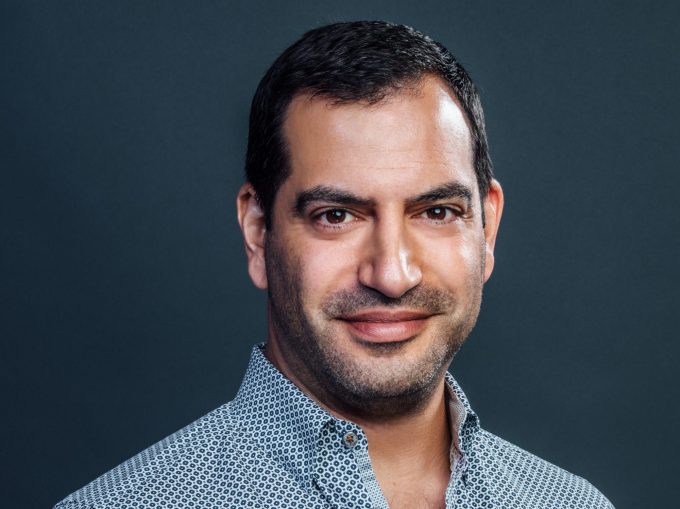Index Ventures — a firm with investments in companies like recent IPO Dropbox, a series of successful gaming companies like King, and others including Slack and coming IPO Zuora — has seen a lot of moves in the past few months.
There was the departure of partner Ilya Fushman earlier this year, but the firm also brought on Sarah Cannon from CapitalG as one of their recent big hires. Index also promoted former Dropboxer Mark Goldberg to partner. Prior to joining Index, Cannon led investments in companies like Looker, MultiPlan, Oscar and Care.com. Cannon will primarily be focusing on growth stage, and is also now a board observer for Slack. Goldberg has been at the firm for around three years and worked on deals like Nova Credit and CoverWallet.
We sat down with the two new partners to discuss some of their plans, as well as some broader parts of the venture ecosystem. Here’s the interview, which has been lightly edited for clarity.
TC: What does the investment committee decision process look like these days?
Mark Goldberg: In the last stage, we have a partner presentation, where the entrepreneur presents and we debrief. Then it’s a vote at the partner level. Everyone votes 1-10, and if it’s over 7 it’s approved. If it’s between 5 and 7, it’s the sponsor’s discretion. On average it’s around in the 7 range. Some partners always rank lower, their most enthusiastic is at 8. It ends up being a pretty intellectually honest discussion, every vote is the same. I’ve worked at other funds before, and it seems like it becomes more of horse trading. This feels like a constructive debate, we operate as one team. It’s also 6:30 a.m. Pacific on Mondays, so there’s that.
TC: When working with entrepreneurs, how do you keep them moving forward — especially when some seem allergic to product changes?
Goldberg: I speak more to my background to being an early business hire at Dropbox, but it’s staying focused on the end user and building something people actually want to use. Regardless of the paradigm, [we ask], are you building a product where at the end of the day, is the end customer a happy user?
Sarah Cannon: So much of your role in the board for the individual decisions is focus. My role is not making decisions but focusing, realistically, and maybe sharing an example from another company you respect. The most effective way there is connecting them to a peer. We were investors in Lyft and Stripe, and a lot of learning would be between those companies. We would say, let me connect you to the head of product at Lyft. After that coffee, the priorities have been reduced to just a few.
TC: What’s the filter for companies?
Goldberg: First off, the [Series] A is where we’re really focused. I think historically Index had really built a brand in Europe. King, SuperCell, Skype and others. When we set up the team in the U.S., we ended up getting pushed into more Series B. We would have loved to see the Series A on many of these companies, but we were new, it was harder to proactively get to these great deals at the earlier stage. So we’re pushing earlier into that Series A. Maybe 7 of the last 10 deals have been [Series] A for us. The challenge is, how do we find these great founding teams and category winners at that stage. Despite the valuations, we want you to hit those check boxes.
Cannon: As you move to later stage, it’s much more on the unit economics. That’s part one — really understanding the unit economics, how big of a business can this actually be. The market could be really large, but what’s the size of the prize. Those are the two things I focus on. It’s easy to look at the unit economics. There are exceptions to the rule, like Amazon, where the margins didn’t look good along the way… Traditionally these companies haven’t made money, and that’s how you miss really exceptional businesses. They are transformative businesses. That’s really how I’ve shifted my way of thinking.
For consumer companies, I think that has to be massive user traction and if you’re seeing wild adoption or a differentiated technology.
TC: How do you think about the state of how we talk about mental health in Silicon Valley right now? How do you help your founders in this respect?
Goldberg: I think being a founder is an extremely lonely job. I think one of the things that a strong venture partner can do is be a really good sounding board. The emotional fluctuations in these businesses are extreme. A founder has to be, even if they’re resilient and have a lot of grit, they’re absolutely going to feel the highs and lows. If you talk about what makes a venture fund and partner valuable, it’s the ability to damper some of that volatility by being available. If someone calls me on a Saturday night, I’m picking up the phone and being present and having that perspective. If you’re doing this job well, you can help the entrepreneur feel less lonely.
Cannon: [Part of it is] regulating on both the highs and the lows. You’ve had the benefit of working with a lot of companies. You can say, this is a great moment, celebrate, but it’s not like we’re going public tomorrow. In the lows, you remind them of the good times, you’re modulating to the middle and giving some perspective.. It’s important to step in as an investor, and to say, “OK, this was a scary moment but this is why I have conviction in your business.”
It’s a topic that’s a lot of shame. It’s very much like an artist, there’s an individual genius creator but there’s a dark side. There’s a very known perspective in the founder world. I hope we have a few brave founders who come out and say, “Look, I really struggled, here’s how I managed to deal with it.”
TC: How have things changed given the shift in the venture landscape, such as with mega-funds like SoftBank?
Goldberg: We see it as a good thing, for us it’s additional optionality for a lot of our portfolio companies. Before SoftBank a lot of times your option is [just going public]. SoftBank is not the only one, there’s Sequoia growth, there’s a lot of money sloshing around the late stage. It’s been a boon for our companies — we’re generally playing at a stage before we’d be competitive [with that].
Cannon: For the later stage, it’s absolutely changing the return profile. To SoftBank’s credit, it’s a brilliant strategy, it’s like an index on the private markets.
TC: How do you differentiate between founders for companies you invest in?
Cannon: For me, the adjustment [to earlier stage] has been a couple things, like adjusting your risk reward. You’re taking a lot greater risk. It’s easier to rely on cohort data, thinking that I’ve seen this for three years. [At earlier stages] it’s less data, and you’re taking more risk, you need to spend more time about thinking about the team. You need to believe that founder is capable of bringing on that high-quality team. To move earlier stage, you have to have a lot more conviction. In later stages you have a bunch of investors already at the cap table.
Goldberg: I think it’s absolutely critical that the market is multistage. We’re stage agnostic and expertise driven. We’ll see a company at the Series A or Series B, and we get to know the founding team. We don’t wait for the round to form, we preempt it, and if we don’t do the deal we have a relationship going forward.
Cannon: [I also think it’s] very specific to the business. If it’s an IT infrastructure startup, the person needs to be highly technical. It maps to the business. Do they know their own strengths and weaknesses, do they know the strengths and weaknesses of their existing members.
TC: How do you think about diversity going forward?
Cannon: The major focus is how do I address this challenge. The numbers speak for themselves in terms of diversity of all types. A lot of founders aren’t happy with where they are; we think about what specifically can we do about it. That’s where we’ve been having a lot of discussions — how are you giving fair reviews, how do you make sure your compensation is the same. There’s always the question about funnel and how do I see different candidates. My view on that is we should do a much better job in venture and companies in screening for the specific attributes you need in the job. We want to push people, rather than going to pools that are easy, such as just to banking, and say the attributes important to an investor is high emotional intelligence, analytical thinking and such. They don’t necessarily come from the same people.
Goldberg: What’s changed is it is now a board-level conversation. At the last 4-5 meetings, this is now a topic on par with the KPIs of the business. That didn’t used to exist. I agree with the tactical points, we can do a better job with diversity, we’re having those conversations.
TC: What about applications of ideas like the Rooney Rule?
Cannon: I think that’s exactly the tactical thing. People are just begging for an idea, something I can commit to changing my funnel. Changing my process to be more fair, founders I think are very more open to it.
TC: How do you manage expectations with your base of LPs, especially as the time threshold between an IPO and the founding stretches?
Goldberg: I think we’re fortunate that as a fund culture and with the LP base, we’re afforded the ability to make a long-term view. While the timeline is stretching, we don’t feel pressure. To the extent the companies continue to build value, the returns are gonna look good enough. We have not felt the urgency to try and realize gains faster, and part of that is our broader philosophy and ethos around investing. We’re here to support the entrepreneurs, and I don’t want to be prescriptive in an exit.
I think we need to be thoughtful when we take a secondary investment. Doing large secondaries in early companies can be detrimental. When we’re looking at rounds where secondaries are available we ask about proceeds being distributed, we want to know [if it’s just certain executives or for the whole team].
Cannon: You do want to think about the employees who have made significant contributions. In a market where companies are staying private much longer, for the employees, I do want us to find a way to have some liquidity. The key is how you structure it. You could buy a house, but you don’t need a mansion.
Goldberg: What I don’t like is when founders or a select set of executives are able to take money. As long as it’s equitably done in a way, like 10 percent to 15 percent liquidity being offered for employees.
TC: What are some learnings you’ve picked up from what’s happening in China?
Cannon: We are not currently investing in China, but I want to learn form China and see what insights we can get from businesses there and how they will be different in the U.S. If you look at live video, a lot of companies have taken off there. The social e-commerce business, mid-messaging, how does that change with transactions.
Goldberg: On the fintech side, it’s almost like the world has inverted; I used to do a lot of cleantech where we were worried China would copy the IP. In fintech, the most innovative companies are coming out of China. If you look at digital payments in China versus the west, they were already way ahead of the curve, and now it’s even more so. It really is, for us, about learning what’s around the future. We’re pushing ourselves.
TC: The majority of that is owned by a few platforms like WeChat or Alipay. Is that a good thing?
Goldberg: Some of these platforms are becoming monolithic conglomerates at this point. My broader thesis in this point is, we’re gonna see a new set of companies and winners from the last few years that are gonna re-bundle the rest of the feature-rich companies into larger platforms. They’re building massive user bases with extreme engagements. You imagine what else can you cross-sell once you have that engagement and brand affinity. We’re gonna see massive category winners of the next digital bank in the U.S.
TC: How are you thinking about ICOs?
Goldberg: We’re watching them opportunistically. I think crypto and blockchain have gotten a huge amount of airtime in the press, to me it’s distracting for financial services. The incumbents are absolutely vulnerable in a way they’ve never been before. We’re seeing huge success.
Cannon: We’re very expertise driven. The two areas are really around blockchain and AI. We just had a presentation we call Monday musings — we’ve had them on gaming, bitcoin and crypto in general — that’s an area where we’re actively trying to build our knowledge set. I think there’s a lot of interest and the timing is of vigorous debate.
One of the challenges is to be an effective unit of economic transaction, to know your customer, and as long as you have nation states it’s going to be hard to have a volume of transactions on blockchain. I don’t think Facebook is going to give up on regulatory protections. You’re gonna have to transfer your bitcoin into pounds or some other currency at some point.
Goldberg: I have had a challenge to find a [high-potential] Dapp. (Dapp is short for decentralized app)
TC: Where are you finding these new areas of talent?
Goldberg: I haven’t found a magic bullet. It’s an aggressive push to reach a diverse set of channels of sourcing.
Cannon: [Companies have big pools of strong candidates], the challenge for early stage is it’s harder to find out about those companies. At the beginning it’s hard for people that aren’t as well networked. What’s a role that a large company has a big pool, how can they help them connect. I think about how to do that in a scalable way. The innovation that Google really did have is doing interviews. Rather than saying we’re gonna get people from top schools, we’re gonna have a test that tests for the engineering skills for this job. If you can prove you have these specific skills, I think that’s a great way. You get people who have the skillsets.
TC: What are you looking for in startups that say they specifically focus on machine learning?
Cannon: The way I thought about investing in AI is three buckets. One was on the generalized AI, and what would replace a human. That’s a lot of science and a lot of risk in the very early stage. The second bucket is vertical AI, and the third in heath care is how would you analyze claims data. Google and Facebook can afford to hire data scientists of incredible caliber, but most companies can’t.
On the vertical side, a lot of it is tech constraints. I’d love to get into contracts, but [you have to] think about what’s possible — what you can do with a camera, where we are with machine vision and the applications of that with an immediate business context. [We look at] how many engineers and data scientists you have, what are the top 5 applications of your technology. You’ll very quickly find they’re doing something that could be automated quickly.
Goldberg: Ninety-nine percent of the pitches that I hear across industries talk about machine learning. It’s become so ubiquitous as it’s almost meaningless, or it’s as horizontal as big data. What I look for is proprietary data. What is really critical is it’s not just algorithms but your ability to train a model faster than anyone else and in a way that’s more unique. You have access to some data pool, and the data is ultimately what sets it apart. For the vast majority, it’s a buzzword that they think will increase the valuation. A way to test that is to look at the technical DNA in the team. To me that’s a lot of suss out is this really machine learning, or is this empty words on a page.
TC: What are the verticals you focus on right now?
Goldberg: There are massive segments of the economy coming online right now. Agriculture, construction, logistics, we look at where the data has been locked up in offline form like on paper or excel. As software brings it online, a lot of those industries are ripe for machine learning.
Cannon: [For me], the two I’m most interested in are healthcare and financial services. It’s about having a proprietary data set but also huge dollar savings. You can be doing a bunch of analytics, but it’s gonna be very hard to convince corporations. A healthcare startup that can convince [a hospital that it can] save you like $1 million a patient, that’s when people are changing their purchasing habits. There’s also fraud, I’ve seen a lot of companies that can pick up insider trading at banks. Those are huge savings on the dollar and regulatory and compliance side.
TC: What signals are you looking for in consumer startups?
Cannon: I always think chance favors the prepared mind. I do want to do thesis work in consumer, and think about areas where I see patterns. When I see the monthly active users data, [I ask], does it conform to the world. Millennial have contrarian thinking, one thing that stood out when the Robinhood founders talk, was that millennials didn’t want to pay an upfront fee. I wonder if there are other models they’re resistant to. Maybe they don’t want to be monetized by ads, and are there businesses that could evolve based on that view.









